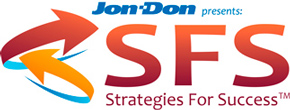 As leaders of our organizations it is easy to fall into the trap of being the “Chief Problem Solver”. Now, don’t get me wrong here. Solving problems is a critical part of being an effective leader. And making the big decisions IS our job. But too often being the chief and ONLY problem solver means that we not only solve our own problems, but that we also take on the problems AND decisions of every single employee in our organizations. Decisions that they very probably should be making for themselves!
As leaders of our organizations it is easy to fall into the trap of being the “Chief Problem Solver”. Now, don’t get me wrong here. Solving problems is a critical part of being an effective leader. And making the big decisions IS our job. But too often being the chief and ONLY problem solver means that we not only solve our own problems, but that we also take on the problems AND decisions of every single employee in our organizations. Decisions that they very probably should be making for themselves!
The seductiveness of being the Chief Problem Solver in their company is extremely difficult to resist for most entrepreneurs. For most of us the need to feel in control is almost tangible as we wrap ourselves in the security of being the Chief Problem Solver. Plus having our employees bring their problems to us feeds right into our basic need to feel needed and important. Our egos are virtually swooning at all this attention!
Let’s face it, the more often people bring their problems to us to solve, the more “irreplaceable” we feel. And the greater the number of times we’re interrupted by urgent calls on our cell phones, the more important we must be!
Unfortunately these “I feel needed” activities do nothing to break the viscous cycle that shackles us to our businesses. All they do is feed the dangerous cycle that makes us the Chief Problem Solver. And the amazing part is realizing that without even trying we’re the ones who created this “needy environment” within our organizations. But let’s cut to the chase here …
When you continue to foster an environment where you are the Chief Problem Solver in your business you become a “bottleneck” through which all the decisions in your organization must pass. As a result, your company will slow down or even stop growing. Even worse your people won’t develop the skills necessary to handle decisions on their own.
This condition creates many unpleasant by-products, but perhaps the most troubling is that your most talented people won’t stick around long term. After all, why should they? If you are going to commandeer all their authority to make decisions (which is what problem solving is!) they won’t feel challenged or be allowed to grow professionally.
So now you will be left with the employees who either can’t make informed decisions on their own because they were never shown how and/or are basically incompetent or don’t want to make decisions because when they do they get yelled at by the boss. Then the cycle repeats itself. And it will continue to repeat itself until you become so frustrated that you find yourself railing in self-righteous indignation, “Can’t anybody around here make decisions for themselves?! Do I have to do all the thinking?” And the answer is “Yes. You will have to do all the thinking…until if and when YOU decide to break the cycle.”
In their book Flight of the Buffalo, authors James Belasco and Ralph Stayer recommend this statement, “As the leader of my organization I am responsible for creating the environment that enables each person to assume responsibility for his or her own performance. The people own the responsibility for delivering great performance. I am responsible for creating the environment where this ownership takes place.”
I think this is a pretty profound statement about leading an organization in today’s world. In my next SFS Instructor’s Blog post I plan to discuss just how to break the viscous cycle of being the Chief Problem Solver. We’ll see how to enable each one of your employees to be their own “chief problem solver”!
Chuck Violand (more about Chuck)
SFS Instructor
CEO Violand Management Associates
